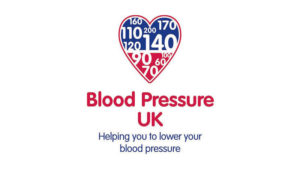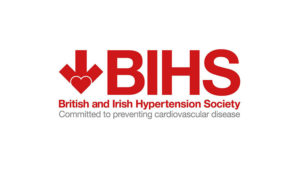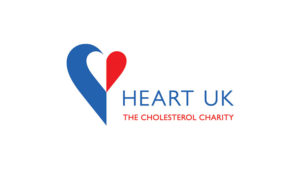We describe the technique, application, risks and benefits of computed tomography (CT) coronary calcium scoring in relation to how it could be used in primary care to help produce an individualised cardiac risk assessment.

We describe the technique, application, risks and benefits of computed tomography (CT) coronary calcium scoring in relation to how it could be used in primary care to help produce an individualised cardiac risk assessment.

Between 0.2 and 4% of all pregnancies in western industrialised countries are complicated by cardiovascular disease (CVD), and the number of patients who develop cardiac problems during pregnancy is increasing. Knowledge of the risks associated with CVD during pregnancy and their management is of pivotal importance for advising patients before pregnancy.
Although many members of the medical profession might agree that theirchosen discipline often leads to periods of weariness, frustration or anxiety, thegreat majority of individuals in active practice would find it difficult to single outa dull day in their way of life.” (David Seegal, Yale Scientific Magazine 1962;36:31)
As many will know, the Secretary of State for Health, Andrew Lansley, announced last December that the government would be developing a new strategy for cardiovascular disease under the direction of Sir Bruce Keogh (NHS Medical Director). As part of this work two Interim National Clinical Directors have been seconded to the Department of Health: me (Professor Huon Gray, University Hospital of Southampton) for Cardiovascular Disease and Dr Damian Jenkinson (Royal Bournemouth Hospital) for Stroke. Both are part-time secondments and together cover the work previously overseen by Professor Sir Roger Boyle, before his retirement last summer.

It is exceedingly uncommon for a woman in the UK to die during pregnancy, with maternal mortality in the region of one death per 10,000 maternities1. Although there have been very significant improvements in antenatal care, such as a marked reduction in the number of deaths due to thromboembolic disease, other areas are trailing behind. One such area is cardiac disease – now the leading cause of maternal death in the UK. These relatively rare deaths also mask the much larger issues of maternal, fetal and perinatal morbidity. The most recent Confidential Enquiries into Maternal Death and the new European Society of Cardiology guidelines summarised in this issue of the PCCJ highlight the major clinical issues and attempt to provide consensus opinion regarding optimal care in what is a relatively evidence-sparse field.
Vitamin D deficiency is a prevalent and important health issue that warrants vigilant systematic screening and appropriate treatment and follow-up on the part of physicians, especially those in the primary care and cardiovascular fields. Although vitamin D deficiency has traditionally been associated primarily with bone disease, it is now clear that this is a multi-organ system disease. Epidemiological studies consistently show strong associations between vitamin D deficiency and bone disease, cancer and diabetes. Additionally, epidemiological evidence links vitamin D deficiency with cardiovascular risk factors, cardiovascular disease and mortality. Conclusive evidence to show that vitamin D supplementation improves cardiovascular prognosis is currently lacking, although randomised trials are under way to address this issue. In this article we review the sources and metabolism of vitamin D, the epidemiology of vitamin D deficiency, and the available evidence linking vitamin D deficiency to cardiovascular disease; and we suggest an approach to systematic screening and to treatment of vitamin D deficiency.
The message regarding eating less has come across loud and clear this year, but there has been plenty to worry about over the last twelve months. The demise of the Primary Care Cardiovascular Society (PCCS) has been on my mind. I was saddened to attend an Extraordinary General Meeting in January 2012, when it was decided to wind up the Society with honour due to declining funds and concern that this situation was likely to deteriorate for the foreseeable future. The closure of the PCCS is a great blow to all of us interested in promoting and improving the prevention and management of cardiovascular disease in our communities.
We now recognise the brain as the seat of the psyche, but the functions of the mind are dependent on the whole body and the harmonious interaction of all its parts.” (Sir Frederick Walker Mott 1853-1926. British neurologist, psychiatrist and sociologist, quoted by W.S. Dawson in Aids to Psychiatry)
Cardiovascular disease (CVD) is one of the leading causes of morbidity and mortality worldwide and its incidence is increasing as lifestyle habits from developed countries are adopted by the developing world. The incidence of diabetes is also increasing rapidly as an epidemic of obesity gathers pace.1 The epidemiology of CVD is uniform throughout the world as demonstrated in the INTERHEART study, which showed that 85-90% of population attributable risk is due to nine cardiovascular risk factors, of which 55% is associated with dyslipidaemia and 12% to previously diagnosed diabetes.2 The dyslipidaemia risk factor in INTERHEART was the ratio of the endogenous (expressed as apolipoprotein B or approximately as non–HDL cholesterol) to reverse cholesterol transport pathways (expressed as apolipoprotein A1 or approximately as HDL cholesterol levels).
A unique new e-platform for primary care

For healthcare professionals in countries with applicable health authority product registrations. The content may not be approved for use in your specific region or country. Please review the applicable product labelling for your country for indications and instructions prior to use. If not approved, please exit this site.
We use cookies to ensure that we give you the best experience on our website.
By continuing to this site you are confirming that you are a healthcare professional and are opting into the use of cookies.



















